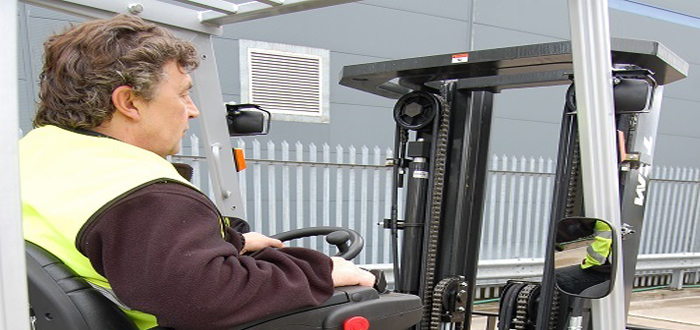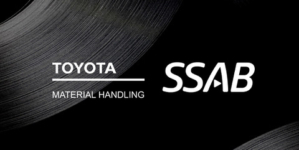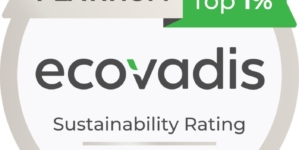-
Nutrivend selects Forterro’s Orderwise to support online expansion and streamline operations - April 11, 2025
-
ARROWXL LAUNCHES AMBITIOUS ZERO WASTE ROADMAP - April 8, 2025
-
THE BCMPA’S NEW CAMPAIGN DRIVES OUTSOURCING SUCCESS IN Q1 - April 7, 2025
-
BLACKOUT TECHNOLOGIES TARGETS TELEMATICS-INTEGRATED MOBILE DEVICE BLOCKING TO COMBAT SMARTPHONE DISTRACTION - April 1, 2025
-
Sparck Technologies awarded Royal designation - March 27, 2025
-
OpenADR Alliance announces first OpenADR 3.0 certified products with EVoke Systems, E.ON Energy and Universal Devices - March 25, 2025
-
Growing fulfilment and contract packer appoints new Managing Director - March 25, 2025
-
When is it time to invest in a WMS? Understanding the key trigger points - March 25, 2025
-
eCapital helps Vantage Recruitment on its journey to financial success - March 24, 2025
-
Hugo Beck Celebrates 70 Years of Packaging Innovation with Open House Events - March 20, 2025
The forklift journey to a fossil fuel free world.
By Malcolm Mitchell – Managing Director, Amvar Handling Solutions
The UK Government has confirmed the phasing out of petrol and diesel engine cars and vans over the next 15-20 years. So assuming that is likely to mean all engines, what is the future for ICE forklifts and is the sector able to respond to this complete shift to electric and clean fuel products?
Around 2/3rds of trucks used in materials handling such as warehousing, logistics and general lifting duties are already electric. ICE variants tend to be those with permanently outside, remote working or heavy-duty assignments where currently battery life, capacity and performance lag behind diesel or gas-powered options.
Environment Secretary, Michael Gove’s announcement has thrown out an interesting challenge to the sector – how to ensure all trucks are completely electric or clean, zero emission powered within a timescale of around 15 years.
In comparison to the motor vehicle industry the challenge seems eminently achievable. At least forklifts don’t require a new charging infrastructure or involve massive new investment in production and technology.
Much of the focus for most vehicle power options is on battery technology and the ability to provide longer run time capacity and faster charging capability.
Batteries are the power source for electric forklifts and reach trucks, offering clean, low emissions and are generally more economical to operate. Presently they represent roughly 1/4 of the total cost of the truck and last around five years, depending on duty and careful maintenance. But there are plenty of cases where batteries last much longer.
The problem is where materials handling activity needs to run a full shift without the inconvenience of recharging or replacing batteries and where heavy duty or external and remote operations demand longer service periods between recharge or refuelling.
There are plenty of advances in battery technology to overcome these issues, and as economies of scale kick-in over time they will become more affordable and more common place.
So too might other technologies such as hydrogen fuel cells, solar power and who knows – yet to be developed ideas on generating, storing and discharging energy. Plus, energy saving and recycling technology that is just waiting to be explored.
One research study suggests that advanced lead-acid battery manufacturers, lithium ion (Li-ion) battery manufacturers, and fuel cell technology providers are now beginning to help operations managers improve throughput and efficiency and save resources by utilizing new electric forklift technologies, claiming that within 10 years advanced lithium iron and fuel cells are likely to have the largest market share.
So no panic necessary as there are solutions available today and even more are rapidly emerging.
For example, businesses currently running diesel or gas truck already have the option to switch to electric right now, with complete operational confidence.
Amvar Handling Solutions have taken advantage of recent advances in battery, charger and truck technology to make it easy and economically advantageous to change. They recently replaced two diesels forklifts used on both indoor and outside duties at a large builders merchant. Their 3 tonne electric trucks have complete weather protection for truck electrics, driver cab and CSE tyres, all of which combine to ensure electrics are safe and efficient when working in demanding outside applications.
In addition to the reduced emissions and environmental impact, the company is planning to gain whole life cost savings in both fuel costs and lower maintenance.
All this is not to suggest that the forklift truck industry has the problem solved. The challenge of removing ICE products and replacing with electric or zero emission alternatives is still going to mean a significant period of transition and competition. Although it’s fair to say that manufacturers have been working on it for a long time and are therefore well placed to deliver realistic solutions over the next decade if not sooner.
































